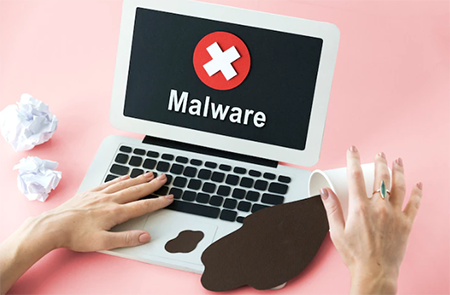What are Malware Attacks, Types, and How to Prevent It?
Malware attack is a significant concern when it comes to company security. Deep Instinct reports that malware attacks climbed by 358 percent and that ransomware attacks increased by 435 percent. Thus, keeping a check on this is essential for any website owner. Since it may cause a considerable loss to your firm if not prevented. Yet, the best defense against malware is a good offense. However, knowing the malware attack, types, and ways to avoid it can help. And this is why the blog below is curated, covering every aspect of malware attack in detail!
What is a malware attack?
Malware attacks are prevalent cyberattacks in which malware (often malicious software) undertakes illegal operations on the victim's machine. The harmful software (sometimes known as a virus) comprises a variety of threats, including ransomware, spyware, command and control, and others.
In certain instances, criminal organizations, governmental entities, and even well-known enterprises have been accused of installing malware. As with other forms of cyber assaults, specific malware attacks receive extensive publicity in the mainstream media owing to their catastrophic impact.

Types of Malware Attacks
There are numerous significant forms of malware attacks to watch out for:
1. Adware
Adware sends adverts automatically to make cash for its developer or a third party. It is frequently combined with spyware.
2. Backdoor (trapdoor)
A backdoor allows thieves to gain unauthorized access to a computer. Backdoors are intended for future use and can linger in a system undetected for years.
3. Rogueware
Adware sends adverts automatically to make cash for its developer or a third party. It is frequently combined with spyware.
4. Ransomware
Ransomware restricts user access to a system or its data and frequently threatens to publish or erase data unless a ransom is paid. It restricts access to stored data and files, whereas locker ransomware restricts access to the infected device.
5. Spyware
Spyware is meant to collect information about an individual or organization. After installation, it can record keystrokes and retrieve sensitive data. Spyware can also enable cybercriminals to monitor and listen via cameras and microphones.
6. Trojan horse
A Trojan horse imitates genuine software to trick users into downloading more malicious software.
7. Worm
Worms are the most prevalent and deadly forms of malware, as they may increase without being tied to a program or executed by a user.
8. Virus
The virus is one of the most often mentioned forms of malicious software. A virus is harmful computer software that may replicate and propagate to other devices. Viruses are used to modify the way a computer performs. These are capable of infecting papers, script files, web applications, and several other programs.
How to Prevent Malware Attacks?
While there are several malware attacks, the good news is that there are several ways to prevent them. Check out:
Educate About Malware Prevention
Make employees know the ways to avoid malware (e.g., don't download and run unknown software, and don't blindly insert "found media" into your computer) and how to identify potential malware (e.g., phishing emails, unexpected applications/processes running on a system) can go a long way toward protecting an organization.

Regular, unannounced exercises, such as deliberate phishing operations, might assist users in being vigilant and vigilant. Learn more about training for security awareness.
Utilize Trustworthy AV Software
An appropriate A/V solution, once installed, will identify (and delete) any existing malware on a system and monitor for and prevent malware installation or activity while the system is running. Maintaining it current with the most recent vendor definitions and signatures will be essential.
Guarantee Network Security
Controlling access to systems on your organization's network is an excellent idea for several reasons. Utilizing established technologies and approaches, such as a firewall, IPS, IDS, and VPN-only remote access, will assist in minimizing the "attack surface" your company exposes.
Most businesses typically see physical system isolation as an extreme step, and it remains susceptible to specific attack vectors.
Conduct Frequent Site Security Audits
Regularly scanning your business's websites for vulnerabilities (i.e., software with known faults, server/service/application misconfiguration) and to determine if known malware has been installed helps safeguard your organization, your users, and consumers and visitors for public-facing sites.
Create Recurrent, Validated Backups
A frequent (i.e., current and automatic) offline backup can be the difference between an uncomplicated recovery from a devastating virus or ransomware attack and a stressful, frantic scramble accompanied by costly downtime and data loss.
The key here is to have frequent backups that can be used for restoring operations and are validated to occur at the intended frequency. Old, out-of-date backups are less valuable than more current backups, and blockages that do not fix correctly are worthless.
Summary
Malware attacks occur in various ways. However, with careful planning, process enhancements, and continual user education, your firm may achieve and maintain a sound security posture against malware threats. Or the best way to get connected with a firm like cWatch Comodo. They offer protection against malware attacks. Not only this, but they also help in the complete removal of malware in no time. You can check out their website removal services and can opt from today.
Why wait? Visit cWatch Comodo to protect your website against malware attacks today!





